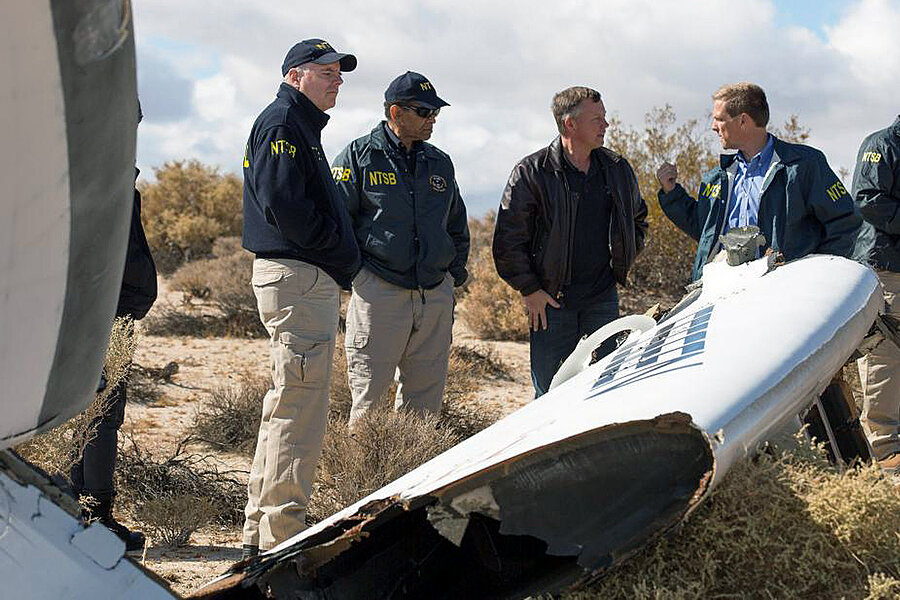Did human factors contribute to the SpaceShipTwo tragedy?
Loading...
Crew actions and the instruments aboard SpaceShipTwo that crew relied on are receiving heightened attention from the National Transportation Safety Board as it continues its probe into the breakup of the craft on a test flight over southern California's Mojave Desert last Friday.
The accident, which killed the co-pilot and seriously injured the pilot, occurred 15 seconds after launch.
SpaceShipTwo is a prototype for the six-passenger craft that Virgin Galactic plans to use to take tourists and scientists on suborbital trips. The company had hoped to carry its first paying passengers next year. The craft was designed and built by Scaled Composites.
Friday's flight was the fourth powered test for the craft. Shortly after launch, the spaceship's motor ignited as planned, and it was accelerating when its unique reentry system deployed prematurely.
For reasons yet unknown, the co-pilot took the first step in a two-step deployment process roughly nine to 10 seconds earlier than called for on the test flight's checklist, which specified the speed at which this step was to have been taken.
This information, gleaned from the craft's telemetry and from videos taken from the cockpit during the launch, prompted the investigation team to take a closer look at human factors that may have contributed to the tragedy, according to Christopher Hart, the NTSB's acting chairman.
“We saw the need to form a new group – the human-performance group – to look at ... the interface between the flight crew and the vehicle, to look at issues such as displays, checklist design, and other issues,” he said Monday night during the team's final on-site briefing.
A key focus for this new group centers on the reason that the co-pilot took the first of two independent steps needed to deploy the reentry system so early, when the craft was traveling at Mach 1.02. The checklist stated that the crew wasn't to unlock the mechanism while the craft was accelerating, Mr. Hart said. They were to wait until the craft reached a speed of Mach 1.4 to pull a lever that unlocks the system.
The second step, which actually deploys the system, requires a crew member to pull another lever. But telemetry indicated that once unlocked, the system began to deploy itself; no one pulled the lever used to activate it.
Important clues are expected to emerge when investigators interview the pilot, who remains hospitalized. Investigators will work with his physicians and family to set up an appropriate time for questioning, Hart said.
Within a few days, the investigation team will pack up the data it's gathered and head back to Washington to conduct the in-depth analysis needed to determine the causes of the accident and issue recommendations for avoiding similar ones in the future, Hart said.
He added that he anticipates that the team will take up to 12 months to finish the probe, although he allows that this one could wrap up more quickly, given the wealth of data gathered during the test flight.






